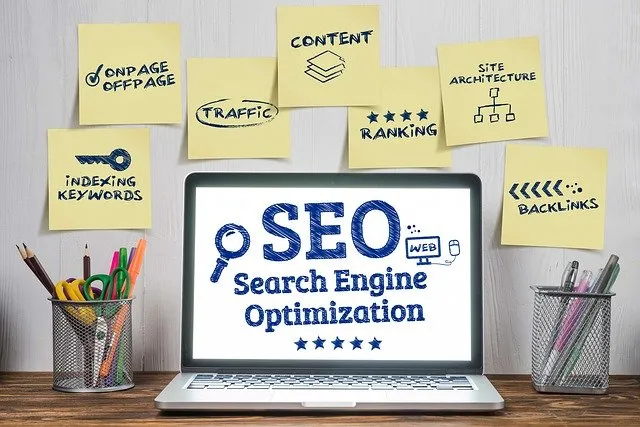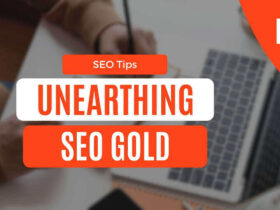Tips to Create SEO Optimized Content
Content on the website needs to be unique, informative, and engaging. Focus on how the content addresses the pain point of readers and provides solutions to their queries. Copy-pasted or duplicate content is harmful to SEO. The main motivation of people to visit and engage with a website is to find the information they are looking for that is not available anywhere else.
Search engines like Google place a very high value on the content present on the website. It should be informative, original, easy to read, and contain the right keywords. The use of proper fonts and font size for effective user readability is equally important.
Good SEO content for the article should ideally be between 1500 to 2000 words or an at least a minimum of 800 words for best SEO results. The content should not have been published anywhere else. It has to be original and unique. An eCommerce website must avoid copy-pasting manufacturer product descriptions. Optimize your product pages to increase conversion rate.
Unearth SEO Gold by Avoiding Survivorship Bias.
Suppose the business has multiple websites and wants to use the same content owned by it on another website. In that case, it must place a rel-canonical tag on the duplicate content pointing it at the original source (best practice for article syndication). The text-to-code ratio should be at a minimum of 10% (for eCommerce websites) and ideally 20% or more for content-based websites.
It is important to include relevant keywords in the content. Google algorithms are well-developed to understand the synonyms and intent of the keywords. It is recommended not to stuff the keywords in the content.
If the keyword-stuffed content reads unnaturally to human eyes, it will also look unnatural to Google. There is no optimum keyword density. It can be anything between 2 to 5%. Businesses must focus on content that addresses the pain points and solve the queries of website visitors.
The ambiguity effect can harm your SEO
People tend to avoid products and services with missing information. It is fear of the unknown. If your website user doesn’t understand your product or a particular choice, he will not choose it. Therefore, give detailed descriptions of the products and services available on your website that answer all possible queries of your website users.
***Pro Tip- Use aesthetic-usability effect for SEO
The aesthetic-usability effect is the user’s tendency to perceive attractive products (looks and aesthetics) as more usable and popular. People generally like to believe that if a product looks better, it will work better, even if the attractive-looking product isn’t any better in performance or efficiency.
Have SEO-friendly design templates that boost the attractiveness of the images and other content on the page. Especially make sure to elevate your site in terms of UX (user experience). ***
In 2019, Google applied BERT on 10% of queries. In the future, Google and other search engines will expand BERT. The search results will be more contextual, and the websites picked will be more authoritative (expertise on the subject). This makes the presence of in-depth and relevant content on your website more important than ever.
What is considered good content for SEO?
- The content for the article should ideally be between 1500 to 2000 words or a minimum of 800 words for best SEO results.
- The content should not have been published anywhere else. It has to be original. Avoid copying and pasting manufacturer product descriptions if you write content for an eCommerce website. If you have multiple websites and want to use the same content you own on another website, place a rel-canonical tag on the duplicate content pointing it at the original source.
- Content can be anything from text, infographics, and videos to images. Ensure the text-to-code ratio is at a minimum of 10% (for eCommerce websites) and ideally 20% or more for content-based websites. Avoid using bulky images and videos. It is good practice to include text descriptions with images and text transcripts for videos to balance text to code ratio.
- It is crucial to post fresh content on the website frequently. Formulate a publishing strategy to maintain the frequency of fresh content on your website.
- Include relevant keywords in the content. Google algorithms are well-developed to understand the synonyms and intent of the keywords. Do not stuff the keywords in the content. If your keyword-stuffed content reads unnaturally to human eyes, it will also look unnatural to Google. There is no optimum keyword density. It can be anything between 2 to 5%.
You can target focus keywords and long-tail versions of focus keywords and include synonyms to make the content SEO friendly. Focus on content that is usable and solves the problems of website visitors. Write the content keeping the user experience in mind. Search engines will automatically reward you with a top ranking for writing helpful content for users. - Internal Links are important. Relevant internal linking allows passing on the SEO juice from one webpage to another. When Google crawls the website, it tends to follow internal links on web pages and crawl all the content interlinked with each other. It also helps search engines quickly know about the presence of other web pages. This allows the undiscovered web pages to get indexed in Google search results.The additional benefit of internal linking is that it increases the number of page visits and time each user spends on the website. This sends positive SEO signals to search engines about website usability. It is best not to include many internal links in the content. An unusual number of hyperlinks might look spammy to users and search engines.
Read Google quality rater guidelines – E.A.T for creating SEO-optimized content.
Optimize Images for Content SEO
The images on the website should very well represent the company’s brand.
- Use original images or buy their usage rights. Even if the image is listed as free for reuse, you might have to credit the source to avoid future copyright issues.
- Always compress the image before uploading. Banner sizes images of 1200*500 pixels should not exceed 150 KB. Lighter images lead to faster loading speed. Consider lazy loading to reduce image loading time. Use JPEG format for best SEO results.
- An ALT tag is still important for images. Make sure to describe the image properly using the Alt tag.
- The filenames for images need to be descriptive. Don’t name your image as ‘article2.jpg’ or ‘product34.jpg’. Instead, use filenames like ’15-SEO-tips.jpg’ or ‘apple-i-phone.jpg.’
- For eCommerce websites and news blogs with lots of images on a single page, it is best to use CDN (Content Delivery Network). CDN service stores a cached version of the images on several hosts and servers, which speeds up the loading time of images and the webpage load faster.
Keyword Research for Content SEO
Start by conducting keyword research to identify relevant keywords and phrases that your target audience is likely to search for. Use keyword research tools like Google Keyword Planner, SEMrush, or Ahrefs to find popular and relevant keywords related to your topic.
Understand User Intent for Content SEO
Match your website SEO with the search intent of users. People usually perform two kinds of searches when they are looking for a potential product or service they know little about,
- a) Informational Searches,
- b) Transactional or Commercial Searches,
Information searches –
Have keywords in your content, title tag, and H tag on your information or blog pages that closely match the information intent of users. People do information searches to learn more about the subject, product, or service and are not looking to shop for the product yet. Use “People Also Ask” queries in the SERPs and include these questions in your content.
Appearing on information searches enables your business to appear in front of people and include them in your sales funnel. These searchers can be your potential customers. It also gives you an edge over your competitors.
Transactional or Commercial searches
These are performed by people who immediately want to buy a product or service. On your product pages, include the keywords like ‘Buy Now, ‘On Sale,’ ‘Purchase Online,’ etc. Have well-crafted Title tags that induce urgency. Display your main USP and attractive offers in the Meta tags to attract users to your business when they are performing transactional searches related to your products or services.
Google’s algorithm is moving toward understanding the intent behind the search query. Therefore, it is crucial to include purchase intent-based keywords in Meta tags of product pages and information intent-based keywords in blog and article content.
Content Optimization Strategies to Rank Higher in Search Results
On-Page Optimization: Optimize your content for on-page SEO. Include your target keywords in the page title, meta description, headings, and content. However, avoid keyword stuffing, as it can harm your rankings. Ensure that your content is well-structured and easy to read.
Optimize URL Structure: Create descriptive and keyword-rich URLs for your content. Keep them short, relevant, and readable. Avoid using long strings of numbers or irrelevant characters in your URLs.
Use Relevant Internal and External Links: Include relevant internal links within your content to guide users to other related pages on your website. Additionally, include external links to reputable sources that provide additional information or support your content.
Mobile-Friendly Design: Ensure that your content is mobile-friendly and responsive. More people are accessing the internet through mobile devices, so having a mobile-friendly design is crucial for SEO.
Improve Page Speed: Optimize your website’s loading speed to provide a better user experience. Compress images, minify CSS and JavaScript files, and leverage browser caching to reduce page load times.
Promote Your Content: Share your content on social media platforms, relevant forums, and industry websites. Encourage others to link to your content, as backlinks from reputable sources can boost your search engine rankings.
Monitor and Update: Regularly monitor your website’s performance using tools like Google Analytics. Track your search rankings, organic traffic, and user engagement metrics. Keep your content fresh and relevant by updating it regularly. This can help maintain its search engine ranking and keep it relevant to your audience. Analyze the data to identify areas for improvement and make necessary adjustments to your content strategy.
***Pro Tip- Avoid Keyword Cannibalization for Best SEO results
Choose target keywords strategically for each webpage. Avoid using the same keywords on multiple pages. When you use the same keywords on multiple pages, Google compares different pages and chooses the page that best suits the user query.
However, the webpage that appears on top of search results might not be exactly the one that gives you the maximum benefit. Having the same keywords on multiple pages leads to keyword cannibalization, and the authority of the webpage is diminished. The click-through rate is divided into various pages. It is rather beneficial to have a great click-through rate on the most relevant page you actually want to rank for maximum conversions.
Instead of targeting all the pages with the “books” keyword for a website selling books, use a specific keyword for each page that is most relevant, e.g., fiction books, bestsellers, novels, novella, short stories, fairy tales, bedtime stories, etc.
Read More– YouTube SEO Tips – How to Rank YouTube Videos
Remember, SEO is an ongoing process that takes time to see results. Following these steps and continuously optimizing your content can improve your website’s visibility and attract more organic traffic from search engines. Remember that creating SEO optimized content is not just about including keywords. It’s also important to create content that is valuable and engaging to your audience. By focusing on both search engine optimization and user experience, you can create content that performs well in search results and resonates with your audience.

Hunaid Germanwala is a digital marketer and content creator at Health Products For You since 2014. He has an MS from Ulm University in Germany. His mind is always buzzing with creative ideas and is eager to explore new perspectives. His motto in life is “Better to Light the Candle than to Curse the Darkness.”














Leave a Reply